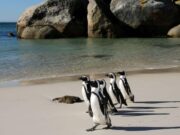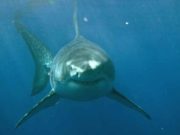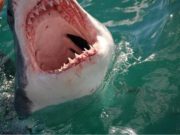The animals known as “by-the-wind sailors” stay out on the open ocean—until the winds change
In recent weeks, about a billion jellyfish-like “purple sailors” have washed up on West coast beaches of the United States. The animals—known as “by-the-wind sailors” or Velella velella—founder on the shore and pile up like a carpet of deflated blue and purple balloons.
The jellies started washing up on Oregon and Washington State beaches four to six weeks ago, says Kevin Raskoff, a marine biologist at Monterey Peninsula College in central California. Then they started showing up in California.
The animals usually float on the surface in the open ocean, riding wind and water currents in search of food using a hardened, triangular “sail.” But in years when the wind changes direction, they are pushed toward shore—and almost certain death.
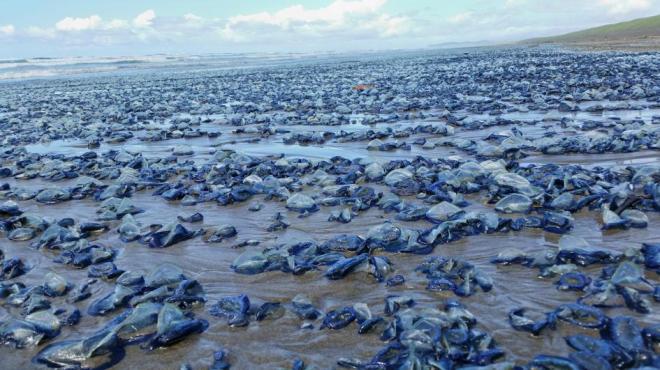 But despite their periodic appearance, researchers know very little about them. “They come ashore in the millions, and we’re left to marvel at their mysteries,” says biologist Kevin Raskoff.
But despite their periodic appearance, researchers know very little about them. “They come ashore in the millions, and we’re left to marvel at their mysteries,” says biologist Kevin Raskoff.
The mass strandings aren’t unusual, Raskoff says They happen about every three to six years.
Raskoff estimates that as many as a billion Velella have piled up on beaches along the West coast. But no matter how pretty they are—the biologist says their dried out sails look like transparent Pringles—people shouldn’t collect them. It’s against California law to collect marine life without the proper permits.

Since these animals are related to jellyfish, they can also sting. Velella are predators and hunt microscopic plankton on the ocean’s surface.
They consist of many tiny polyps living and working together as a colony. They capture prey, build their “sail,” and digest food. They also produce miniscule jellyfish that spawn sperm and eggs for reproduction.
If you touch them, you might not feel any pain in your fingers, Raskoff says. But if you rub your eyes or touch a more sensitive part of your skin, “you’re going to feel it.” In other words, the rule is: don’t touch.
These beached jellyfish relatives—called Velella—normally inhabit the open ocean, using strands of stingers to snag tiny animals. They exhibit two different body types depending on where they are in their life cycle.
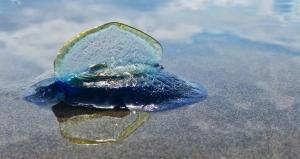 Dead Velella stretch as far as the eye can see on a beach at Fort Stevens State Park in Oregon. Changes in the prevailing winds blow these animals ashore in huge numbers—perhaps as many as a billion, experts say.
Dead Velella stretch as far as the eye can see on a beach at Fort Stevens State Park in Oregon. Changes in the prevailing winds blow these animals ashore in huge numbers—perhaps as many as a billion, experts say.
The sail on a Velella colony tilts either right or left. Sealed air chambers in the float beneath the sail keep the entire colony afloat while specialized polyps hang down and capture food.
Source: National Geographic 20 April 2015
